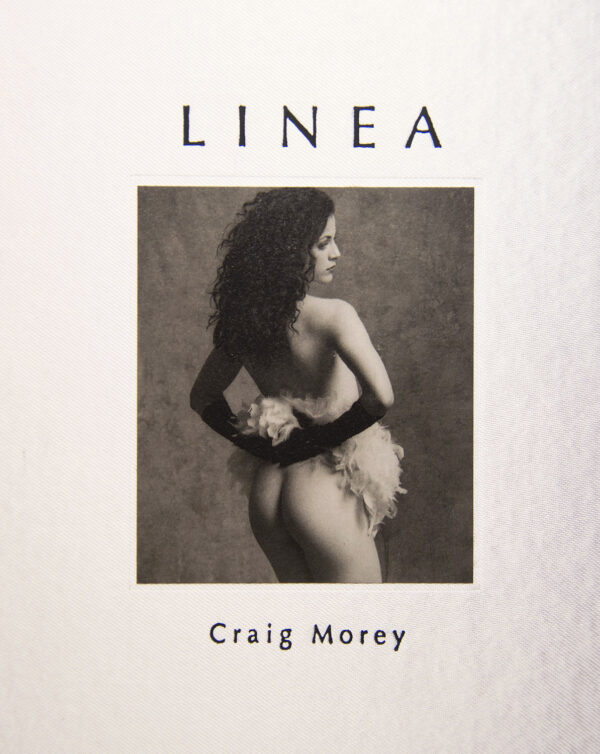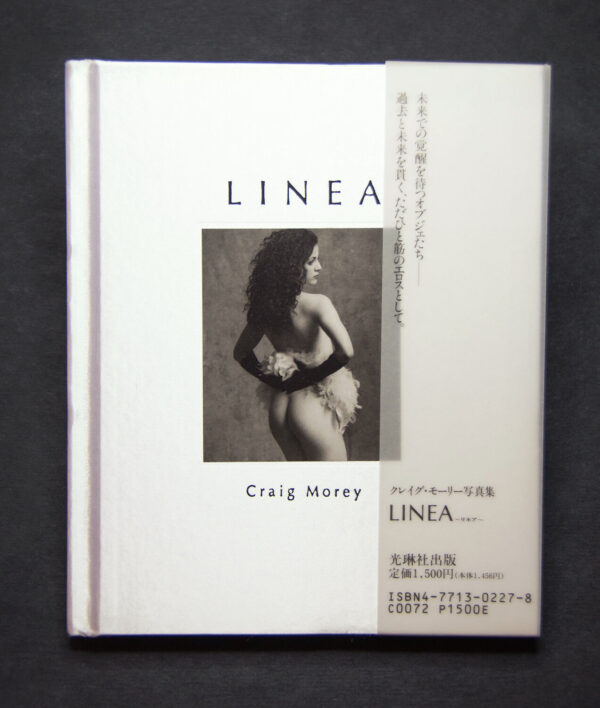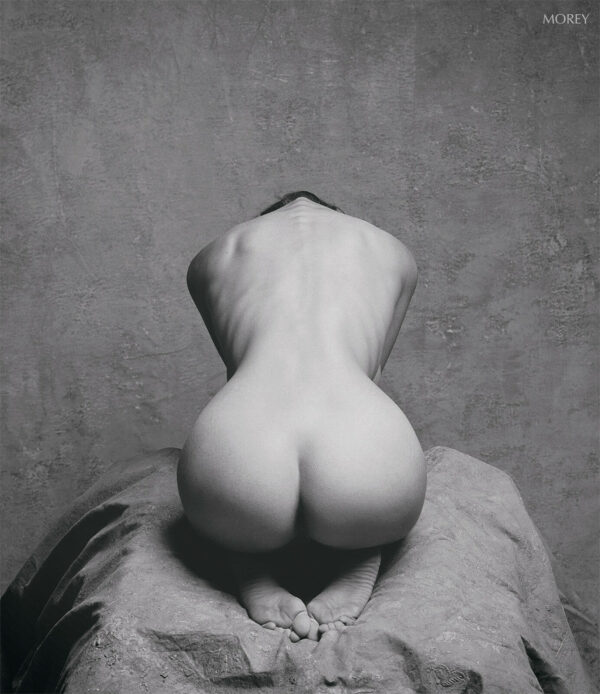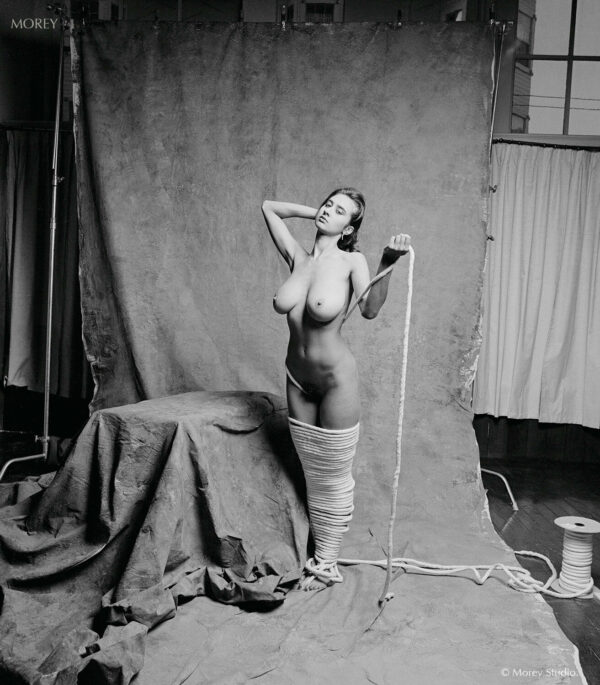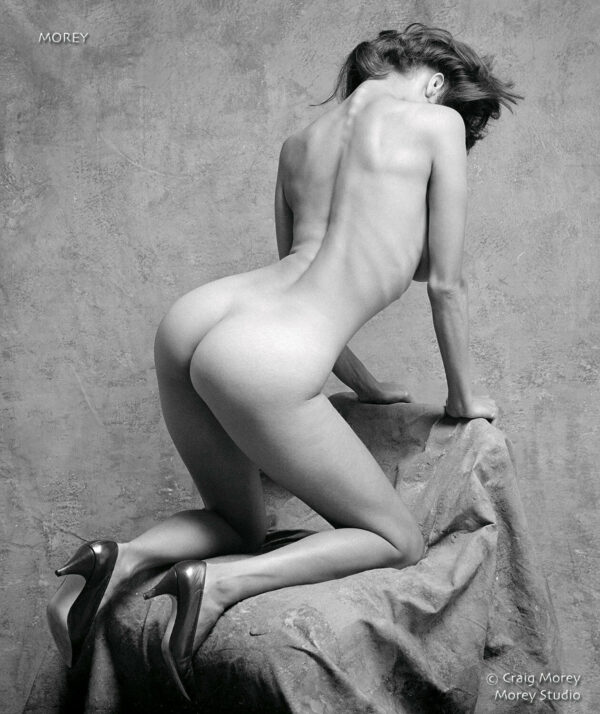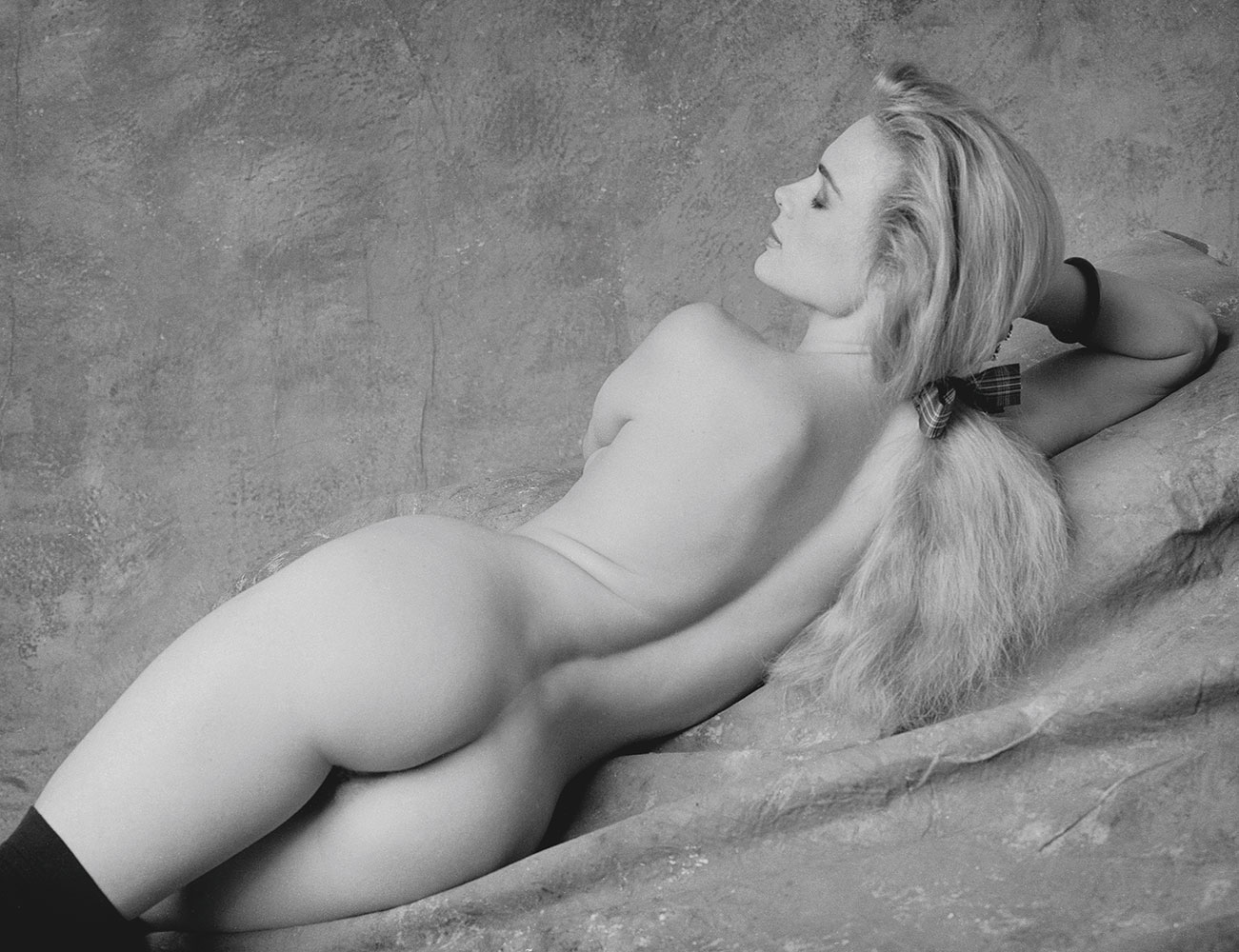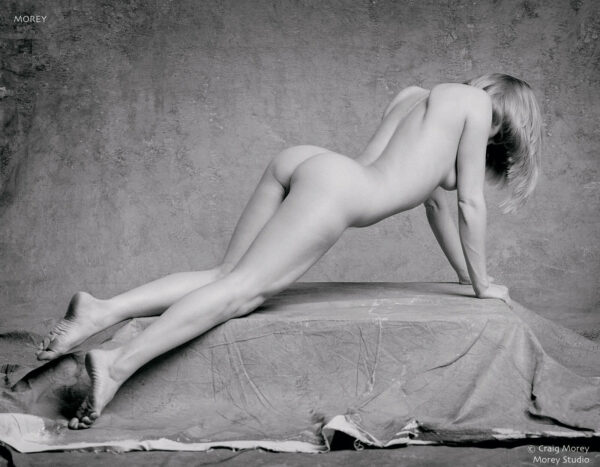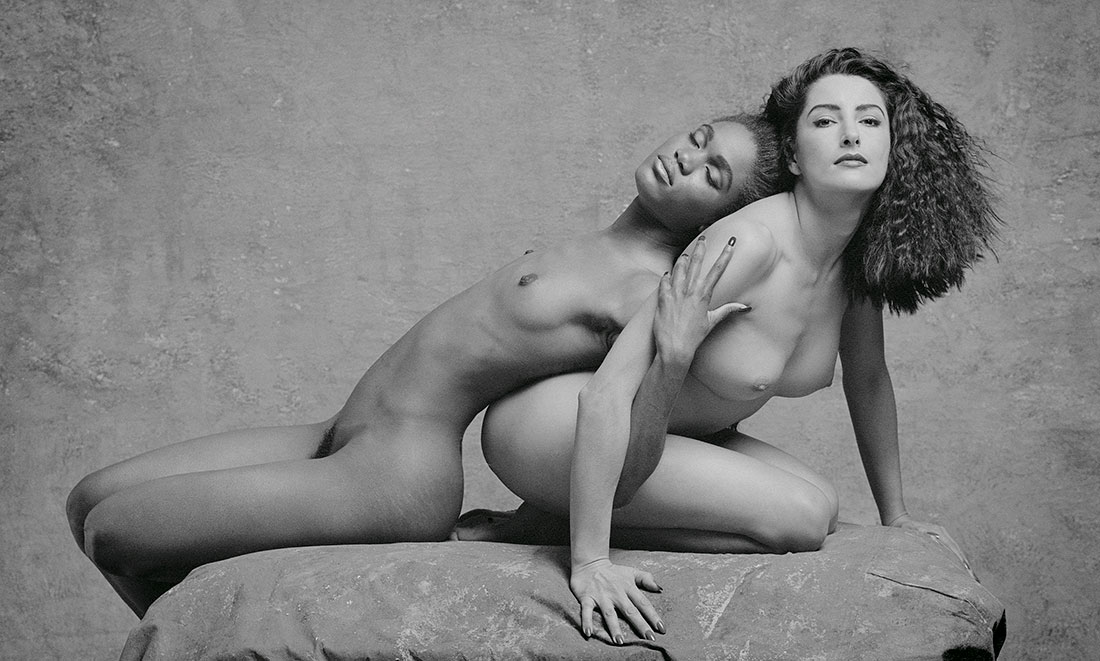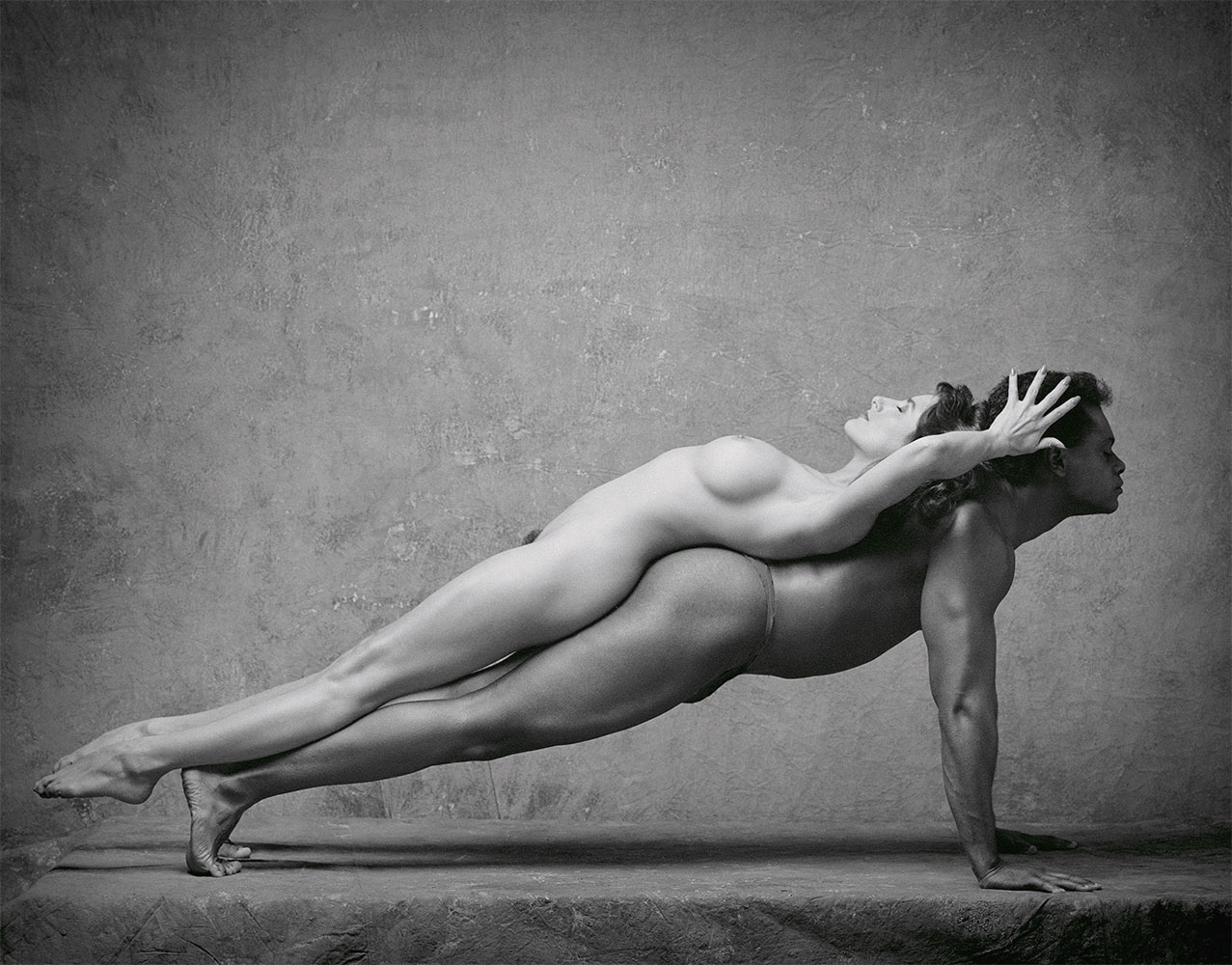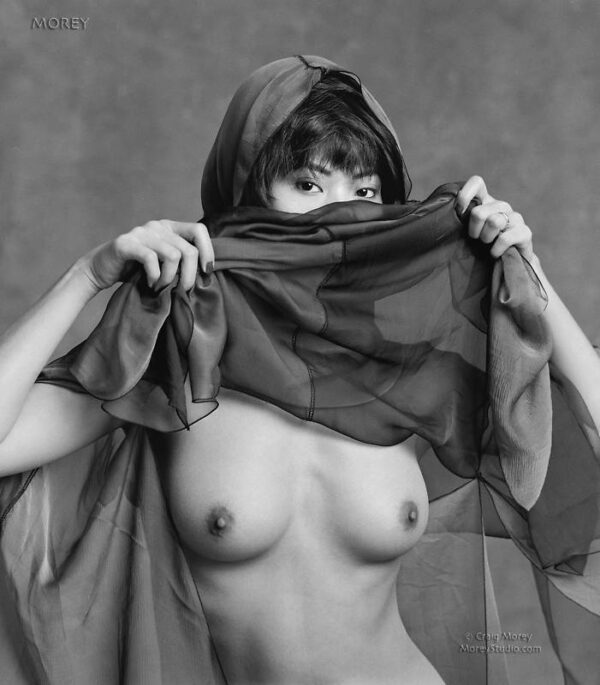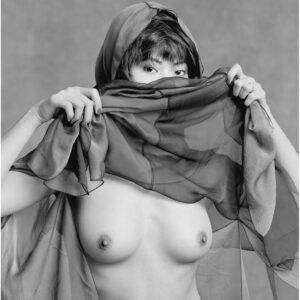Description
Book Title: LINEA – Thirty-Five Nudes (Hardcover black & white nude art photography book, signed First Edition, by Craig Morey, with a foreward by Yoshinori Kaneko.)
Book specs: Hardcover in transparent slipcover; approx. 6 x 7″, 51 pp. 35 duotone plates, signed by Craig Morey (Out of print) ISBN: 4-7713-0227-8. Translated by Michel Howard Maesaka; designed by Masahide Yoshida and Satomi Araki. Published by Korinsha Press & Co., Ltd., Kyoto, Japan (1996) in association with Atsuhide Nakajima. All copies are signed and dated by Craig Morey. (“Linea” is the Italian word for “lines” – it does not refer to the cover model or any other photo in the book)
Please note: this is not a large format coffee-table book; it is a smaller dimension than my first monograph, Studio Nudes, although it does contain several of the same images. Books are all from the original 1996 print run, and most are of the bookseller category “like new”, “very good”, or “good”, with some minor signs of shelf wear and aging. Buyers may request inscription at the time of purchase; otherwise books are shipped with simple signature and date. We have a very limited supply of these books, less than 10 remaining. This book is out of print, so the price will increase as the supply is diminished. Purchases are limited to one per customer.
Shipping: Books are shipped via USPS media mail in well padded shipping envelopes.
About the artist: Craig Morey is an award winning photographer, based in the San Francisco Bay Area for over 25 years. He is well known for his black and white studio nudes, and has published ten monographs of photo work, including Studio Nudes (Penthouse Books, 1992), Linea (Korinsha Japan, 1996), and 20th Century Studio Nudes (Glaspalast Edition, Germany, 2001). His photographs are included in hundreds of books, magazines, and art photo web sites.
From the introduction: “Photographs are predictions facing backwards” The nude models of Craig Morey call to mind this play on words. Women are at times bestowed with beautiful wings, while at other times merely become as objects -tightly bound, splendrous, ubiquitous figures which await the awakening of the future. Just as the skin of a young woman is enhanced and beautified through her sexual love of a man, the muscles and skin of his models seem to shine as they are caressed by the lens of the camera in a substantiation of Eros which transcends both past and present. (Yoshinori Kaneko, Japanese art critic)

